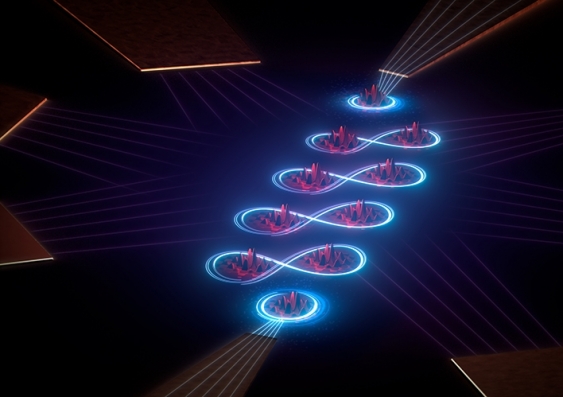 As reported by the University of New South Wales (UNSW).
As reported by the University of New South Wales (UNSW).
Quantum computing hardware specialists at UNSW have built a quantum processor in silicon to simulate an organic molecule with astounding precision.
A team of quantum computer physicists at UNSW Sydney have engineered a quantum processor at the atomic scale to simulate the behaviour of a small organic molecule, solving a challenge set some 60 years ago by theoretical physicist Richard Feynman.
The achievement, which occurred two years ahead of schedule, represents a major milestone in the race to build the world’s first quantum computer, and demonstrates the team’s ability to control the quantum states of electrons and atoms in silicon at an exquisite level not achieved before.
In a paper published today in the journal Nature, the researchers describe how they were able to mimic the structure and energy states of the organic compound polyacetylene– a repeating chain of carbon and hydrogen atoms distinguished by alternating single and double bonds of carbon.
Lead researcher and former Australian of the Year, Scientia Professor Michelle Simmons, said the team at Silicon Quantum Computing (SQC), one of UNSW’s most exciting start-ups, built a quantum integrated circuit comprising a chain of 10 quantum dots to simulate the precise location of atoms in the polyacetylene chain.
Prof Simmons was AIP’s 2000 Women in Physics Lecturer.
“If you go back to the 1950s, Richard Feynman said you can't understand how nature works unless you can build matter at the same length scale,” Professor Simmons said.
“And so that’s what we're doing, we're literally building it from the bottom up, where we are mimicking the polyacetylene molecule by putting atoms in silicon with the exact distances that represent the single and double carbon-carbon bonds.”
Read the full media release here.
Photo: An artist's impression of inside the quantum integrated circuit modelling the carbon chain. The simulated carbon atoms are in red, while the blue depicts electrons exchanged between them. Credit – SQC.
